
views
Deciding What Type to Buy
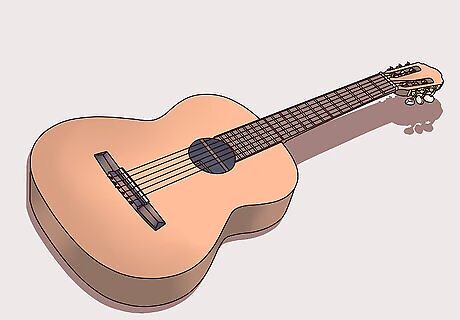
Pick a classical guitar for a true beginner because the strings are softer. A classical guitar has nylon strings, which are softer and easier for a child to manipulate. These strings are less likely to hurt your child’s fingers, which means they’re great for complete beginners. Choose a classical guitar when your child is first learning to play so that they can slowly get used to the strings. It’s common for metal guitar strings to cause calluses on your fingertips, but children are often sensitive to pain. Your child may not want to play as often if it hurts to do so. Classical guitars are typically lightweight, which makes them easier for a child to hold. Acoustic guitars are a bit heavier than a classical guitar, while electric guitars are the heaviest option. Your child may find that an electric guitar is too heavy for them, so have them try it out first.

Get an acoustic guitar if your child has some playing experience. An acoustic guitar has steel strings, which often cause discomfort when your first start playing them. However, acoustic guitars are a popular choice for musicians and have a fuller sound than classical guitars. Let your child transition to an acoustic guitar once they’re used to manipulating the strings on a classical guitar. Talk to your child about their progress. Ask them if their fingers are hurting, as well as well as how they're playing their guitar. Ask your child’s music teacher if they think it’s time for your child to upgrade to an acoustic guitar.

Select an electric guitar for an experienced child who wants to rock. Electric guitars typically use steel strings, but the strings aren’t as taut as an acoustic guitar’s strings. This makes it easier for a child to play. Consider an electric guitar if your child has experience with a classical guitar but prefers the sound of an electric guitar. You can find electric guitars in child sizes, but you may have to look online because some music shops don’t carry them. You’ll need to buy cables and amps to go with an electric guitar because otherwise it’s hard to hear them. This typically drives up the price of the guitar. Plus, your child will need to learn how to plug up their instrument.
Choosing the Right Size

Pick a 30 in (76 cm) guitar for a 4- to 6-year-old. This is a 1/4 size guitar, which makes it small enough for a young child. It’s about 20% smaller than an adult-sized guitar, making it easier for a child to hold. Look for a 30 in (76 cm) guitar at your local music store or online. While this size is made for children, it’s usually not safe to give it to children younger than age 4 because the strings are too sharp. Get your child a toy guitar if they’re too small to hold a 30 in (76 cm) guitar comfortably. They aren’t ready for a real guitar, but a toy guitar can spark their interest. EXPERT TIP Nicolas Adams Nicolas Adams Professional Guitarist Nicolas Adams is a 5th generation musician of Serbian Gypsy descent and the lead guitarist of the band Gypsy Tribe. Based in the San Francisco Bay Area, Nicolas specializes in Rumba Flamenco and Gypsy jazz and playing the guitar, Bouzouki, Balalaika, and piano. Nicolas Adams Nicolas Adams Professional Guitarist Our Expert Agrees: It's important to get a child a guitar that's going to fit them. Think of it like a golf club—you can't teach a kid to play golf with adult-sized clubs. Similarly, a child can't play a full-sized guitar properly.
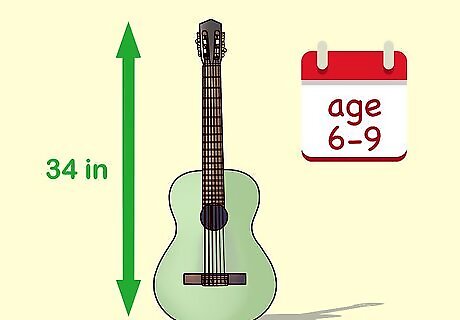
Get a 34 in (86 cm) guitar if your child is aged 6 to 9. This is a 1/2 size guitar, so it’s still a bit smaller than an adult guitar. These guitars are also popular for travel because they’re so compact. Purchase a 34 in (86 cm) at your local music shop or online. This is typically the hardest age group to buy for because they can range in height. If your child is very tall for their age, you may decide to go up to the next size. Have your child hold the guitar to make sure the size feels right.
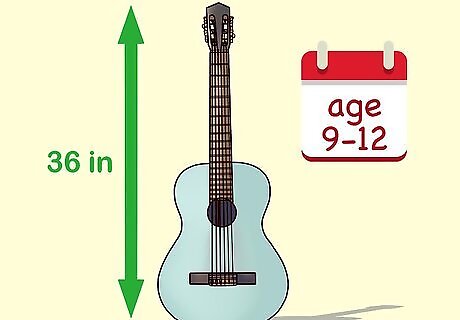
Buy a 36 in (91 cm) guitar for a 9- to 12-year-old child. This is a 3/4 size guitar, and you’ll find a wide range of options because it’s the most commonly sold child size. Pick a 36 in (91 cm) guitar if your child is almost ready for a full-size guitar but is still too small to comfortably play it. You can find these guitars at your local music shop or online. This size is the most popular child size because most kids start playing guitar when old enough to play a 3/4 size guitar.
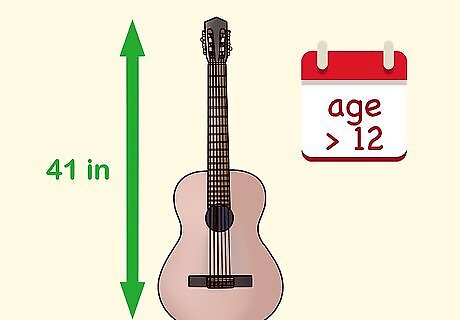
Purchase a full-size guitar if your child is older than 12. Unless your child is very small for their age, they’re ready for a full-size guitar once they reach the age of 12. Let your child hold an adult guitar to make sure they feel comfortable. If they do, go ahead and get the full-size version. If your child is small for their age, don’t buy a full-size guitar hoping your child will grow into it. They’ll have a hard time learning to play an instrument that’s too big, which may discourage them from playing.
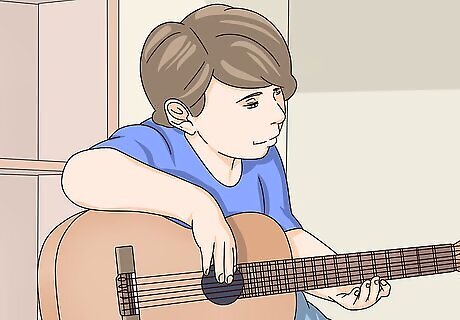
Let your child hold the guitar to check the size before you buy it. Your child should be able to comfortably hold the guitar and reach around to play it. Have them sit down and hold the guitar on their lap in the store, if possible. Ask them how they feel and if it’s easy to reach all of the strings. Purchase the size that your child feels most comfortable using. Ask the store’s sales staff if the guitar looks to be the right size for your child. If you're buying the guitar as a gift, ask for a gift receipt. Also, check the store's return policy to make sure you can take it back if it's the wrong size.Tip: If your child is either below or above average in height for their age, choose their guitar size based on their height.
Getting the Best Guitar for Your Budget
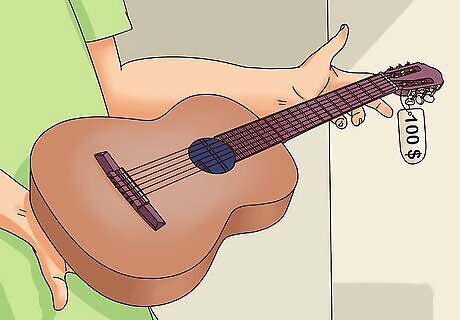
Buy the best guitar you can afford. Poor quality guitars are often hard to keep tuned and don’t produce good sound. This can make them challenging to a beginner because the songs they play won’t sound right. To avoid this, don’t buy the cheapest guitar you can find. Instead, look for the highest quality guitar that fits within your budget. While guitars can get really pricey, you can buy a decent guitar for around $100. Typically, new guitars priced less than $75 aren’t worth purchasing because they’ll produce poor sound.Tip: Get your guitar inspected and adjusted by an experienced staff member at your local music store or by your child's music teacher. When a guitar is straight out of the box, it may be out of tune and can be difficult for a beginner to play.
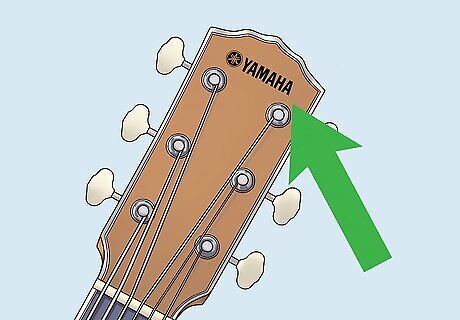
Factor in the quality of the brand. Your child doesn’t need the fanciest guitar you can find when they’re first starting out. However, a quality guitar will be easier to tune and will produce a good sound, which can motivate your child to stick with it. Look for guitars manufactured by notable brands. These include recognizable names like Gibson, Guild, Seagull, Yamaha, Ovation, Fender, and Taylor. Research popular brands before you go so you know what you’re looking for. Talk to the music store staff if you’re purchasing a guitar in person.Tip: If you’re on a budget, Cordoba and Yamaha often have affordable options for good quality guitars, depending on the model you choose and where you make your purchase.

Look for a used guitar for a budget-friendly option. Used instruments are more affordable while still being of high quality. Visit a local dealer for guitars that have been checked and tested by professional musicians, or check your local classifieds. Before you purchase a used guitar, test it out to make sure it plays well and doesn’t have signs of damage. If you don’t know a lot about guitars, ask your child’s music teacher or a knowledgeable friend to help you examine the guitar.Tip: If you don’t recognize the brand of the guitar, look it up on your phone before you make a purchase. Check that the brand’s guitars have good longevity and that the used price is lower than the price of a new guitar.
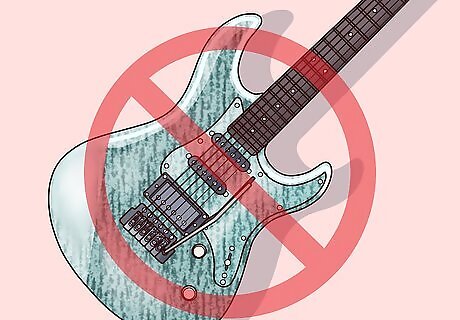
Avoid buying shiny or decorated guitars if sound is important. Kids are often drawn to decorated guitars, but paint and rhinestones can dull the sound of an acoustic or classical guitar. It’s best to purchase a solid wood guitar. Pick a guitar that looks nice but isn’t covered in paint or veneer. An electric guitar is different. If your child is ready for an electric guitar, it’s okay to get one that’s decorated.
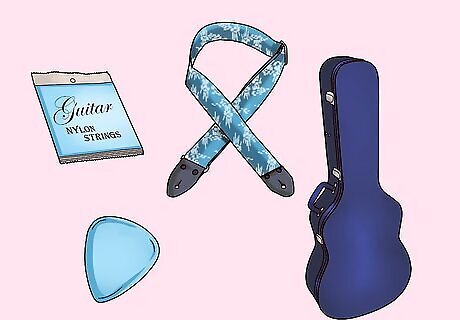
Purchase the right accessories for the guitar you chose. Your guitar purchase likely won’t be complete without accessories. Make sure you get everything your child needs in order to use their guitar. The type of accessories you need will depend on the type of guitar you’re purchasing. Here are some accessories you may need: An extra set of strings. Guitar picks. A guitar tuner. A guitar case or bag. A guitar strap. An amp and a cable for an electric guitar.












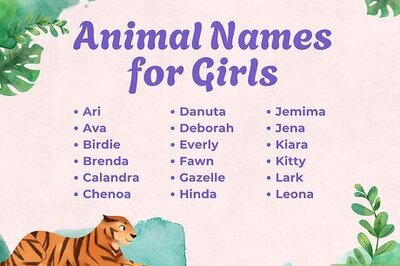

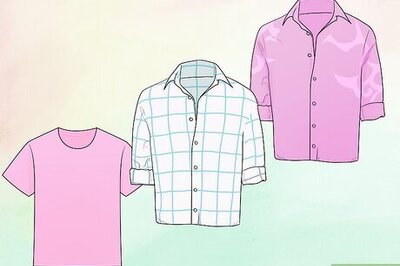
Comments
0 comment